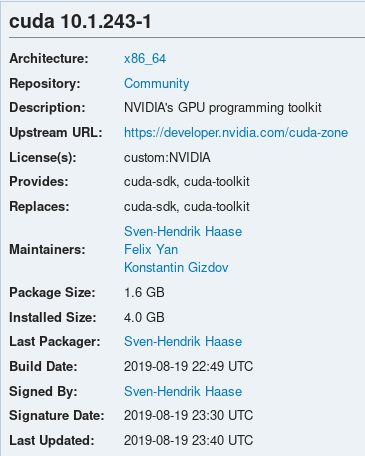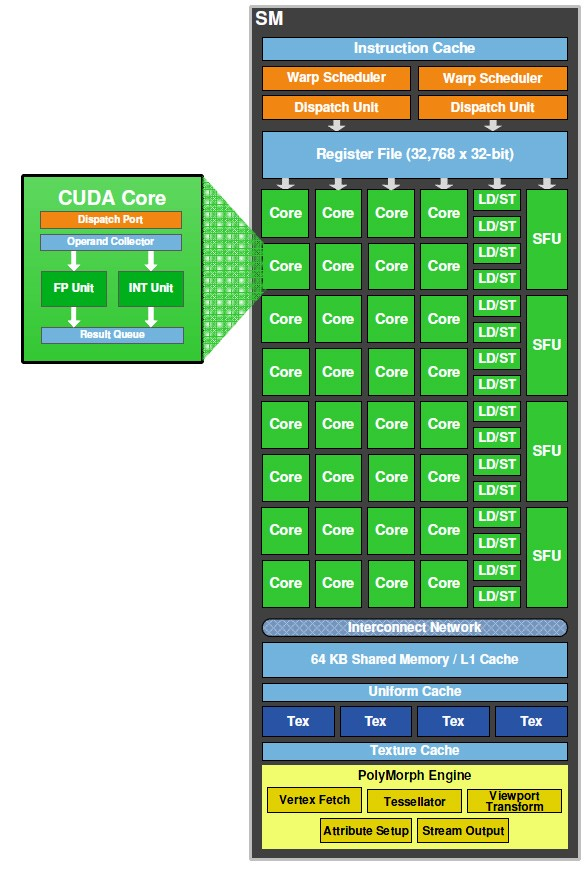#include "buddyKVGSum.cuh"
__device__ int gcd(int a, int b) {
if (a == 0) {
return b;
} else {
while (b != 0) {
if (a > b) {
a -= b;
} else {
b -= a;
}
}
return a;
}
}
__device__ int lcm(const int a, const int b, const int gcd) {
return (a / gcd) * b;
}
__device__ int f(const int a, const int b, const int min_lcm) {
return lcm(a, b, gcd(a, b)) >= min_lcm ? 1 : 0;
}
__global__ void buddyKVGSum(const Matrix a,
const Matrix b,
Matrix c,
const int n,
const int min_lcm) {
extern __shared__ int shared_copy[];
int bx = blockIdx.x;
int by = blockIdx.y;
int tx = threadIdx.x;
int ty = threadIdx.y;
if (tx == 0) {
if (ty == 0) {
for (int i = 0; i < n; i++) {
shared_copy(0, i) = a(by, i);
}
} else if (ty == 1) {
for (int i = 0; i < n; i++) {
shared_copy(1, i) = b(bx, i);
}
}
}
__syncthreads();
if (f(shared_copy(0, tx), shared_copy(1, ty), min_lcm)) {
atomicAdd(&shared_copy[2*n], 1);
}
__syncthreads();
if (tx == 0 && ty == 0) {
c(bx, by) = shared_copy[2*n];
}
}
void print(const Matrix a, const int n) {
for (int i = 0; i < n; i++) {
for (int j = 0; j < n; j++) {
printf("%d ", a(i, j));
}
printf("\n");
}
}
void sum(const Matrix a,
const Matrix b,
Matrix c,
const int n,
const int min_lcm,
const int input_size,
const int verbose) {
Matrix ad, bd, cd;
int *nd, *min_lcmd;
gpuErrchk(cudaMalloc((void **)&ad, input_size));
gpuErrchk(cudaMalloc((void **)&bd, input_size));
gpuErrchk(cudaMalloc((void **)&cd, input_size));
gpuErrchk(cudaMalloc((void **)&nd, sizeof(int)));
gpuErrchk(cudaMalloc((void **)&min_lcmd, sizeof(int)));
gpuErrchk(cudaMemcpy(ad, a, input_size, cudaMemcpyHostToDevice));
gpuErrchk(cudaMemcpy(bd, b, input_size, cudaMemcpyHostToDevice));
gpuErrchk(cudaMemcpy((void *)nd, (void *)&n, sizeof(int), cudaMemcpyHostToDevice));
gpuErrchk(cudaMemcpy((void *)min_lcmd, (void *)&min_lcm, sizeof(int), cudaMemcpyHostToDevice));
if (0 != (2 & verbose)) {
print(a, n);
printf("\n");
print(b, n);
printf("\n");
}
dim3 gsize(n, n);
dim3 bsize(n, n);
clock_t time = clock();
buddyKVGSum<<<gsize, bsize, (2*n+1)*sizeof(int)>>>(ad, bd, cd, n, min_lcm);
gpuErrchk(cudaDeviceSynchronize());
time = clock() - time;
gpuErrchk(cudaMemcpy(c, cd, input_size, cudaMemcpyDeviceToHost));
if (0 != (1 & verbose)) {
print(c, n);
printf("\n");
}
printf("Execution time: %f\n", (float) time / CLOCKS_PER_SEC);
gpuErrchk(cudaFree(ad));
gpuErrchk(cudaFree(bd));
gpuErrchk(cudaFree(cd));
cudaDeviceReset();
}
int main(int argc, char **argv) {
if (argc < 5) {
printf("Program must be called with at least 4 parameters.");
return 42;
}
const int n = atoi(argv[1]);
const int m = atoi(argv[2]);
const int min_lcm = atoi(argv[3]);
const int seed = atoi(argv[4]);
const int verbose = argc > 5 ? atoi(argv[5]) : 0;
const int matrix_size = n * n;
const int input_size = matrix_size * sizeof(int);
Matrix a = (Matrix) malloc(input_size),
b = (Matrix) malloc(input_size),
c = (Matrix) malloc(input_size);
srand(seed);
int i, j;
for (i = 0; i < n; ++i) {
for (j = 0; j < n; ++j) {
a(i, j) = rand() % (m - 1) + 1;
}
}
for (i = 0; i < n; ++i) {
for (j = 0; j < n; ++j) {
b(i, j) = rand() % (m - 1) + 1;
}
}
sum(a, b, c, n, min_lcm, input_size, verbose);
free(a);
free(b);
free(c);
return EXIT_SUCCESS;
}













